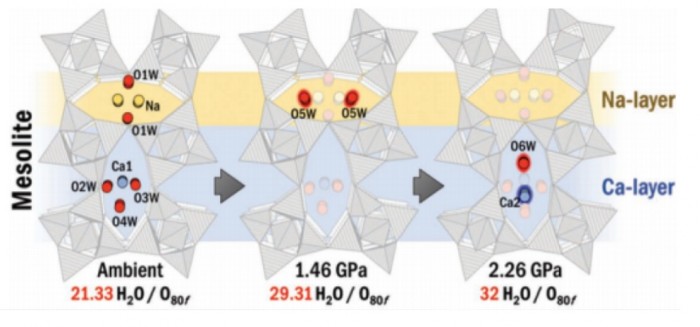“Structuration under Pressure: Spatial Separation of Inserted Water during Pressure-Induced Hydration in Mesolite”
- Authors
Y. Kim, J. Choi, T. Vogt, and Y. Lee*
- Journal
American Mineralogist (Letter)
Vol.103, pp.175-178, 2018.01 - DOI
Abstract
In situ high-pressure single-crystal X-ray diffraction studies of mesolite, an aluminosilicate composed of stacks of Na+ -containing natrolite and Ca2+-containing scolecite layers in the ratio of 1:2, showed two discrete steps of pressure-induced hydration (PIH): first H2O molecules are inserted into the natrolite layers between ∼0.5 and ∼1.5 GPa and subsequently into the scolecite layers. During the PIH in the natrolite layers, the coordination environment of Na+ changes from six to seven, the same as that of Ca2+ in the scolecite layers. While the natrolite layers behave as in the mineral natrolite, the scolecite layers show a different behavior from the mineral scolecite by adopting the super-hydrated natrolite-type structure at higher pressure, as a larger distortion is not favorable in the 1:2 layered framework. This spatial separation of inserted H2O during PIH and the growing structural similarity of the two layers result in a weakening of k ≠ 3n reflections maintaining the 1:2 layer configuration. Our study of this unique behavior of mesolite provides a simple model of structuration under pressure, and the implications of our experimental findings are discussed.












